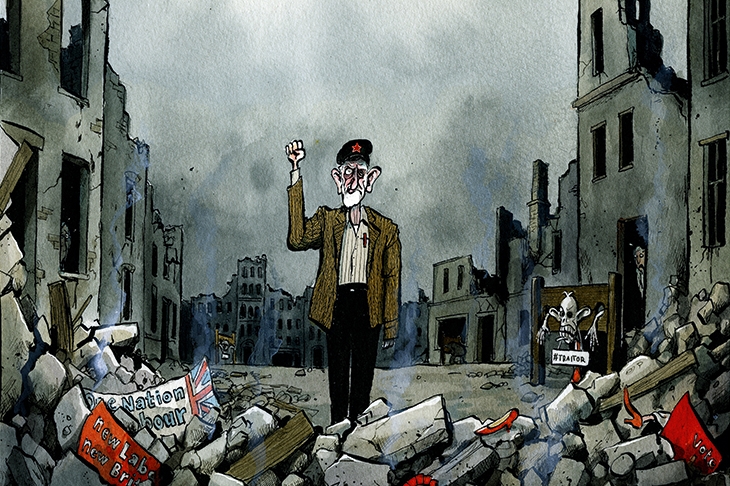‘There are times, perhaps once every thirty years, when there is a sea-change in politics,’ reflected James Callaghan in 1979, conscious he was about to be turfed out of Number 10. He didn’t know the half of it. While Margaret Thatcher’s election did herald the end of the post-war consensus, it kept the Conservative/Labour ‘mould’ intact, despite later attempts by the SDP/Liberal alliance to break it. But with a ‘Brexit election’ now called for 8 June, Labour will be fighting for its very survival.
The last great national political realignment was the 1922 general election in which Labour beat the Liberals into second place for the first time. This was largely due to shifting trade union support and the Liberals splitting into two factions led by Asquith and Lloyd George. Even after they regrouped, the Liberals never recovered. But the more recent political realignment north of the border could prove a blueprint for the Liberal Democrats regaining their position as Her Majesty’s Most Loyal Opposition.
The present political conditions in England and Wales are remarkably similar to those in Scotland in the wake of the 2014 independence referendum. There, Labour made the mistake of sharing a platform with the Conservatives in the ‘No’ campaign, leading to such disillusionment among left-wing Scots that Labour only managed to scrape one seat in the 2015 Westminster elections as their supporters flocked to the SNP. A year later, the unthinkable happened, and the Conservatives bumped Labour into third place in the Scottish Parliament. The Yes/No and Left/Right paradigms coalesced together behind the Left/Yes SNP and the Right/No Conservatives.
Likewise, in England and Wales, Labour has been severely compromised by the fallout from the EU referendum. Unable to straddle the growing division between its Brexiteer working-class voters and Remainer London metropolitans, the party has chosen instead to take no position on the single greatest issue of our time. It’s telling that, when Jeremy Corbyn finally got round to releasing a statement on Theresa May’s snap election, no mention was made of Brexit at all. Tim Farron’s far swifter response mentioned little else.
As in Scotland, the referendum has exposed Labour’s redundance, allowing the Leave/Remain and Left/Right paradigms to coalesce together behind the Right/Leave Conservatives and the Left/Remain Liberal Democrats. This might not happen immediately – even in 1923 the Liberals managed a temporary comeback with 158 seats to Labour’s 191 and 29.7 per cent of the vote to Labour’s 30.7 – but they will almost certainly regain many of their South West seats from the Conservatives and may even wrest London from Labour.
The immediate result in June, however, will most likely be an enormous majority for the Conservatives. It’s even possible their candidates could sneak through in Labour heartlands as the party’s vote is split three ways between stubborn tribalists, Ukip, and the Liberal Democrats. Imagine Dan Jarvis being unseated by a Tory in Barnsley Central.
In the 1931 general election, both Labour and the Liberals split into pro- and anti-coalition factions, allowing the Conservatives to smash into the Commons with a supermajority of 470 seats (of 615) and 55 per cent of the vote. Journalist and Labour MP Ivor Bulmer-Thomas called it ‘the most astonishing in the history of the British party system’. This next general election might be about to prove him wrong.
Paul Nizinskyj is the creative director for Conservatives for Liberty







Comments